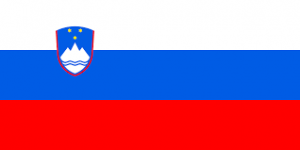Language/Slovenian/Grammar/Word-order-and-sentence-structure
As a Slovenian language teacher with over 20 years of experience, I know that learning the basics of sentence structure is a crucial step towards becoming proficient in Slovenian. In this lesson, we will cover the fundamentals of forming basic sentences in Slovenian, including subject-verb agreement, word order, and the use of phrasal verbs.
Verb Conjugation
Before we dive into sentence structure, let's begin with a brief overview of verb conjugation in Slovenian. Verb conjugation involves changing the form of a verb to match the tense and subject of a sentence. In Slovenian, verbs are conjugated by adding suffixes to the end of the verb stem.
There are different forms of conjugation in Slovenian, depending on the person and number of the subject. Let's take a look at the present tense of the verb "imeti" (to have) for the first person singular, first person plural, and third person singular:
| Slovenian | Pronunciation | English |
|---|---|---|
| imam | [ɪ'maːm] | I have |
| imamo | [ɪ'maːmo] | we have |
| ima | ['iːma] | he/she/it has |
Note that the verb stem "im-" remains the same in all three forms, and the suffixes change to match the subject and number of the sentence.
Word Order
In Slovenian, the most basic sentence structure consists of a subject, a verb, and an object. The typical word order for a basic Slovenian sentence is Subject-Verb-Object (SVO). However, unlike in English, the word order in Slovenian is more flexible.
Let's take a look at some examples to illustrate this:
- "Jaz imam avto." (I have a car.)
- "Avto imam jaz." (A car, I have.)
- "Imam avto jaz." (Have a car, I.)
All three sentences have the same meaning, but the word order differs. In Slovenian, the emphasis is often placed on the object of the sentence, rather than the subject or verb.
It's also important to note that in Slovenian, adjectives usually come after the noun, unlike in English where they generally come before. For example, "moder avto" (blue car) would be "car blue" in English.
Subject-Verb Agreement
In Slovenian, the verb form changes to agree with the subject of the sentence in terms of person and number. Let's take a look at the present tense of the verb "biti" (to be) for the first and third person singular, and first person plural:
| Slovenian | Pronunciation | English |
|---|---|---|
| sem | [sɛm] | I am |
| smo | [smɔ] | we are |
| je | [jɛ] | he/she/it is |
Note how the verb form changes to match the subject in each sentence. This is called subject-verb agreement.
Phrasal Verbs
Slovenian also uses phrasal verbs, which are verbs that consist of a main verb and one or more particles. The particle(s) can change the meaning of the verb, create a new meaning, or add emphasis.
Here are some examples of phrasal verbs in Slovenian:
- "oditi" (to go) vs. "odnesti" (to take away)
- "dati" (to give) vs. "podati" (to give/reach out)
- "čakati" (to wait) vs. "čakati na" (to wait for)
It's important to pay attention to the particles in these verbs as they can drastically change the meaning of the sentence.
Asking Questions
In Slovenian, questions are usually formed by changing the order of words in a sentence or by adding a question word at the beginning of the sentence. For example:
- "Imaš ti avto?" (Do you have a car?)
- "Kje imaš avto?" (Where do you have a car?)
Note how the word order changes in the second sentence to emphasize the question word "kje" (where).
Conclusion
In conclusion, understanding word order and subject-verb agreement are essential components in forming basic sentences in Slovenian. Additionally, being aware of phrasal verbs and how particles can change the meaning of a verb is crucial towards mastering the language. Keep practicing and don't be afraid to experiment with word order to find what sounds natural to you!
Related Lessons
- Conjugation
- Give your Opinion
- Negation
- 0 to A1 Course
- Adverbs and prepositions
- Gender
- The subjunctive mood and modal verbs
- Complex sentences and subordinations
- Nouns, articles and gender
- Future Tense


